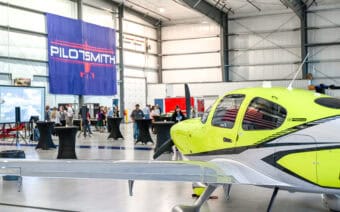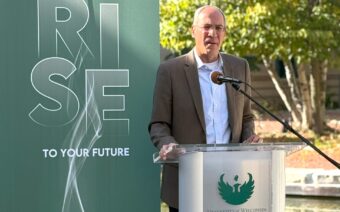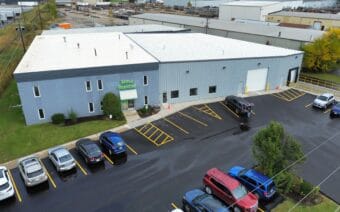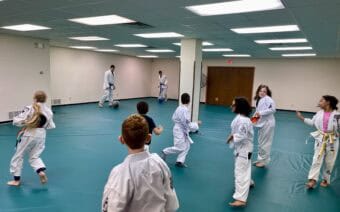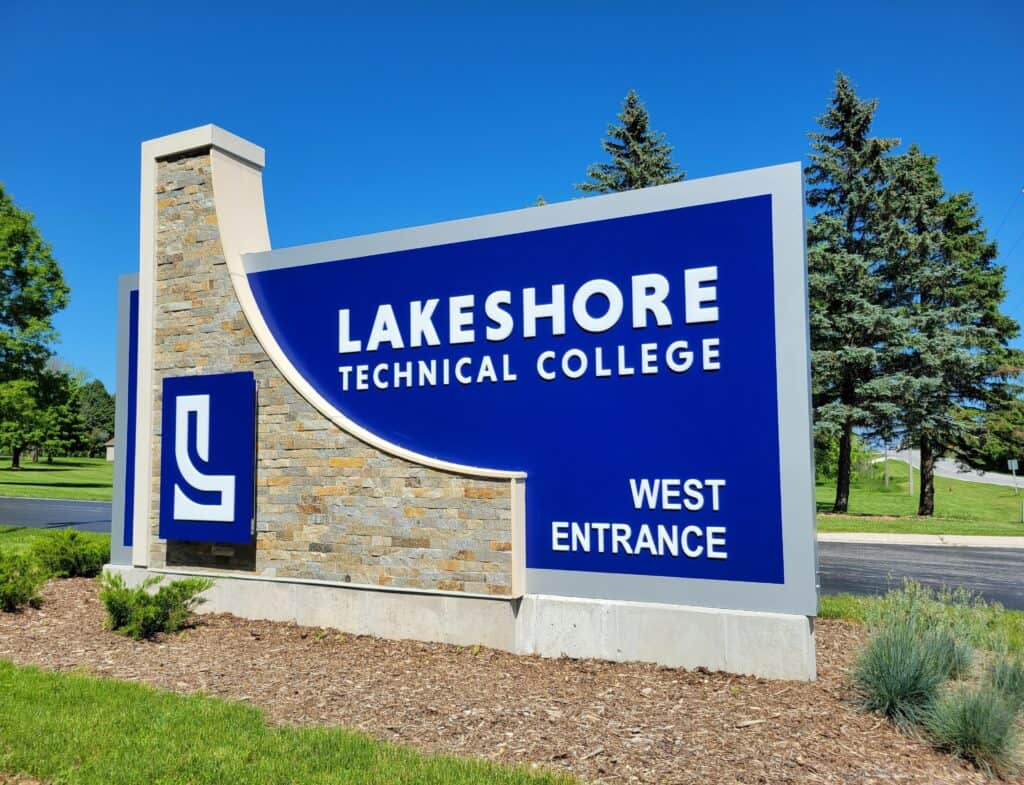
July 29, 2024
CLEVELAND – Approaching education with an emphasis on what people can do instead of the amount of time they spend in a classroom, Meredith Sauer, vice president of instruction at Lakeshore College (Lakeshore), said, has provided the college with an opportunity to provide more students with more flexibility.
“We recognize traditional education looks at an average of how you perform on various assignments and tests,” she said. “It doesn’t lend itself to perfecting certain skills. And the last thing we want to do is put somebody out in the workforce who may have a deficiency in some area.”
It is for this reason, Sauer said Lakeshore transitioned some of its programs to competency-based education (CBE).
CBE, she said, looks at that and says, “we want you to master all of these skills.”
“Competency-based education breaks down the information that needs to be learned in a doable way, where students can practice skills, talk through theories and learn these things in a safe environment,” she said.
Sauer said it also allows students to make mistakes along the way.
“If I get nervous and perform something incorrectly, I can go back and practice it again,” she said. “There’s a lot of value in learning something by doing it over again. We allow (students) to re-submit an assignment or re-perform a skill.”
The approach, Sauer said, focuses on the competencies needed to make students a “proficient employee or proficient in a certain area.”
She said CBE also individualizes instruction – “allowing students to move at their own pace.”
“Maybe I’m not ready to move on in the material but the rest of the class is, or maybe I’m ahead of the pack, but I have to wait for everybody else,” she said. “We’ve been in those classroom situations where I may feel confident in this and I’m ready to ace that test, but my colleagues in the classroom are still back on step two.”
Sauer said it also individualizes the attention students receive in the classroom as well.
“Every person may be in a different spot, and our faculty are ready to address those needs,” she said. “It allows students to complete class work as quickly or as slowly as they need. That is the big thrust with competency-based education.”
Following the COVID-19 pandemic, Sauer said students are looking for a different type of learning.
“They are not inclined to sit in a classroom anymore for three hours at a time knowing ‘I have kids, I have work, I have all these other things I have to do,’” she said. “It’s all about providing flexibility and individualizing (things) for the needs of our students.”
It’s working
Sauer said Lakeshore started transitioning some of its programs to a CBE approach in 2018 – and has since seen much success.
“In a time when we see a lot of colleges closing, we see a lot more students coming in,” she said.
Sauer said it has been interesting to track the enrollment of the programs the college has converted to a CBE delivery system.
“What we have seen is a program that may have had lower enrollments is now exponentially growing because of the flexibility CBE offers,” she said.
Sauer said Lakeshore has also received an increase in comments from students regarding the relationships they can develop with their instructors.
“In the past, they may have been intimidated to raise their hand or voice the question among their peers, but now they’re having conversations and getting the questions answered they need,” she said. “So, we’re getting a lot of positive feedback from students.”
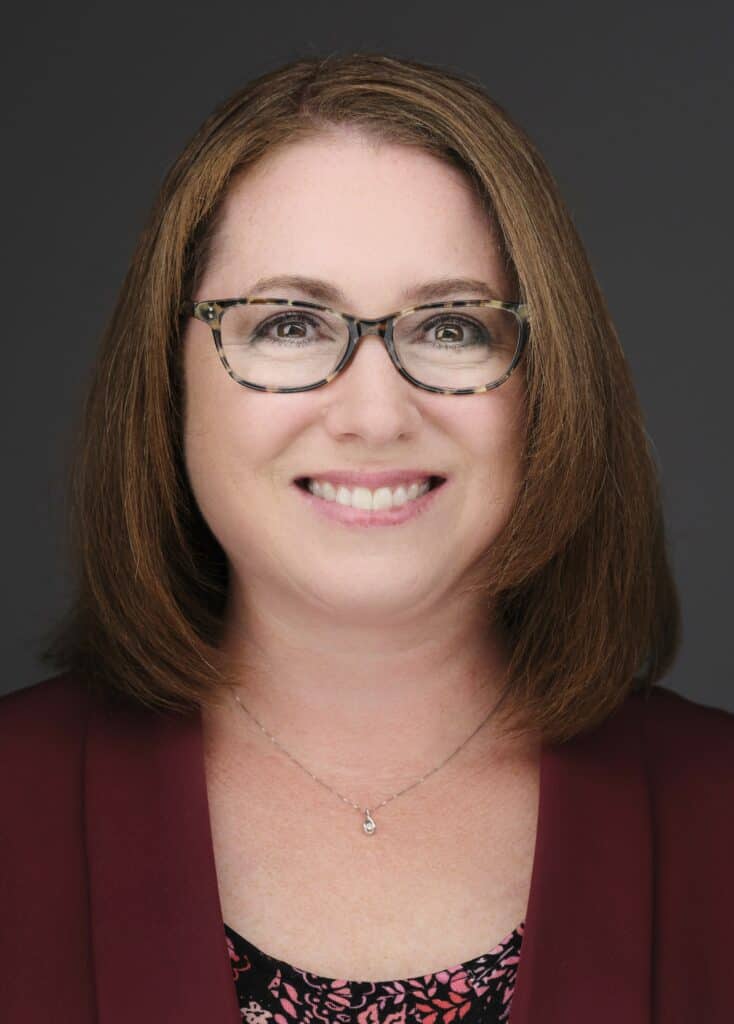
The positive feedback, Sauer said, is also coming from faculty members.
“They talk about how they might have looked out on 30 students in a classroom and didn’t know anything about them and what they may be struggling with – assuming they understand the material when they talked about it in class,” she said. “Now they’re having great conversations and realizing, ‘oh, you didn’t turn in your assignment because your child was in the hospital this weekend. That’s fine. Let’s be flexible with what your needs are.’ It allows them to get to know them on a one-on-one basis.”
Those relationships built in the classroom, Sauer said, can equate to opportunities outside the classrooms as well.
“It can create some good connections for our students as they graduate and move on from here – because they say, ‘I know so and so, they taught me, and they recommended I come to your business for a job now.’ So there’s a lot of good value.”
The right circumstances
When Lakeshore first explored the possibility of introducing CBE, Sauer said, “we thought all of our programs were going to move this way.”
“However, when we did a deep evaluation, we realized it is a phenomenal fit for some places, and other places, it’s not quite as good of a fit,” she said.
Joining the Competency-Based Education Network, Sauer said, provided Lakeshore with a roadmap of sorts to start and expand its CBE offerings.
“As we worked with the network, we began to look at our college programs and decided which would be easiest for us to start with,” she said. “A lot of those programs fell into our manufacturing areas – because they’re skills based. They’re tangible – ‘I either perform the skill or I don’t, and maybe I need more practice.’”
So that, Sauer said, is where Lakeshore started.
“We started in the machining areas – machine tool technology, machine tool operations,” she said. “Again, tangible. I can perform this skill, practice this skill and I can show you I’ve mastered this skill.”
CBE delivery, Sauer said, was extended further into Lakeshore’s manufacturing areas of study before turning to health care.
“We have a program called medical coder, again, a lot of skills, but now we also have some theories,” she said. “Students need to know some medical terminology. They need to know some basic anatomy and physiology. Then we started to focus on more of the theory-based types of courses.”
Since moving to competency-based education delivery, Sauer said Lakeshore’s medical coder program enrollment has increased 100%, with welding and auto collision also experiencing significant increases of 60% and 77%, respectively.
Up next, Sauer said, was Lakeshore’s certified nursing assistant (CNA) program.
However, due to outside entities dictating the hours of instruction, Sauer said Lakeshore leadership recognized the CNA program wasn’t a good fit for a CBE delivery system.
“Competency-based allows students to move as fast as they want, completing the course in less time than what’s dictated by our health services,” she said. “There was a little bit of a disjointedness there, so we’re going to be flipping that one back into our regular, traditional delivery, which is what the Department of Health Services prefers.”
Sauer said Lakeshore isn’t afraid to “jump into it, try it” and later realize it wasn’t a good fit.
“We’ve had a bit of that kind of stuff before,” she said.
This fall, Lakeshore plans to transition more of its theory-based program into a CBE delivery system, including its human resources administration, business management and digital marketing program.
“So, it isn’t really skills to perform it but rather includes more academic types of pieces, more heady types of things,” she said. “A lot of colleges who use competency-based typically start in that arena. They start with those types of programs that are not skills-based because they find those to be more difficult. Whereas we started with the skills-based and are now moving to the theory-based. We’ve had to evolve into what Lakeshore’s model is.”
A resource
As Lakeshore has grown and found success in CBE, Sauer said other colleges from around the country have begun taking notice.
The college, she said, is experiencing an increasing number of visits from other colleges interested in adopting or expanding the CBE delivery model on their campuses – most recently by Umpqua Community College (Oregon) and Northeast Iowa Community College.
These colleges, Sauer said, are doing what Lakeshore did when it began its CBE journey.
“There is a lot of value in learning from those who have gone before you or those who are walking in the trenches with you,” she said. “Early on, when Lakeshore started looking at this model, we did a lot of visits. There was a team of folks from Lakeshore that went to Utah to look at Salt Lake Community College. They went to Texas to look and see what they were doing. We had a college that had just started CBE here in Wisconsin, so we traveled up there. There were various trips we took as well.”
Now that Lakeshore is into its fourth year of offering CBE programs, Sauer said others are looking to it for guidance.
“They’re maybe at the start investigating, or maybe they don’t have complete buy-in from their faculty or college administration, or they’re looking to refine what they do and are looking for some of those best practices,” she said.
Northeast Iowa Community College, Sauer said, has some CBE programs, “but they won’t necessarily have a whole college buy-in.”
“They were looking for, ‘how do you get faculty investment? How do you make sure your board of directors is on board with what you’re doing? What kind of data are you looking for as you continue to expand and evaluate?’” she said.
With Umpqua Community College, Sauer said it started with theory-based courses but was looking for guidance in transitioning manufacturing courses to a CBE delivery system.
Visiting Lakeshore from Northeast Iowa and Umpqua, Sauer said, were instructors, deans and success coaches.
Community, business buy-in
Lakeshore’s business partners, Sauer said, are excited for various reasons.
“Some of them are excited because it means we can get graduates to them sooner,” she said.
Sauer said there is also positive feedback with the work experience equivalent aspect of CBE.
“If someone already in the workforce has experience and can prove those competencies, we have a system in place to evaluate that and give them credit for that prior learning – that is part of our CBE model,” she said.
Mastering all of the skills required for an area of focus, Sauer said, is also a positive aspect of CBE.
“It’s not an average of all (skills) where I may be weaker in some areas, but my average was high enough to pass the class,” she said. “(Businesses) know students coming from CBE have mastered these skills, abilities and theories – they’ve proven that mastery, or they don’t pass the class.
CBE, Sauer said, is becoming more common in higher education across the U.S., and according to a 2020 survey report from the American Institute for Research, was available at 128 institutions, with each offering at least one program.
When the fall semester begins, Sauer said Lakeshore will be offering more than 50% of its programs through the CBE model.
More information on those programs can be found at gotoLTC.edu.
 Kundinger Inc. partners with AUBO Robotics USA
Kundinger Inc. partners with AUBO Robotics USA ‘Think of it as the Oscars of our industry’
‘Think of it as the Oscars of our industry’


